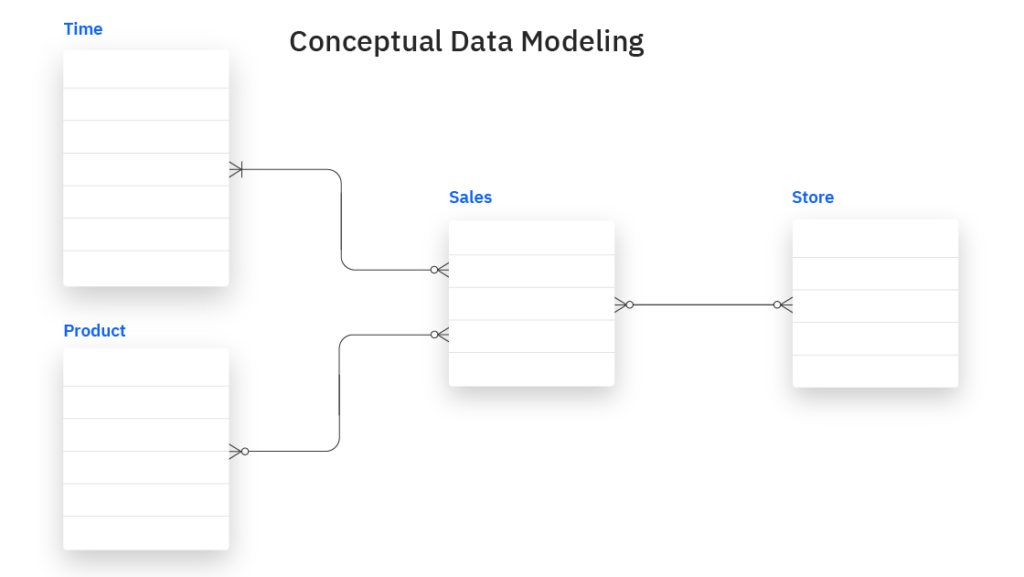Have you ever wondered how the data in a database is structured and organized? From the books you borrow at a library to the products you purchase online, every interaction with a database is governed by its underlying design. But how exactly do designers create these structures? Data models can generally be divided into three categories:
- Conceptual model: Defines the “what” of the system, focusing on high-level concepts and entities.
- Logical model: Specifies the “how” of the details, delving into the organization and relationships of data.
- Physical model: Addresses the “how” of implementation, detailing the technical aspects and structure of the database system.

1. Conceptual Data Model
The conceptual data model represents high-level concepts and relationships between data entities in a simplified manner, independent of any specific database management system (DBMS) or technical implementation details.
It focuses on defining the scope and boundaries of the data to be stored in the database.
Key Characteristics:
- Abstract representation of data requirements.
- Defines entities, their attributes, and relationships.
- Language-independent and technology-agnostic.

2. Logical Data Model
The logical data model translates the conceptual data model into a more detailed representation that is closely aligned with the structure and constraints supported by the chosen database management system.
It defines data elements and the relationships between them in a more structured format.
Key Characteristics:
- Translates conceptual model into technical specifications.
- Defines tables, columns, keys, and constraints.
- Independent of physical implementation details.

3. Physical Data Model
The physical data model represents the actual implementation of the database on a specific database management system.
It includes details such as data types, indexing, storage structures, and performance optimizations tailored to the chosen DBMS.
Key Characteristics:
- Represents the database implementation.
- Includes technical details like storage, indexing, and optimization.
- Specific to the chosen database platform.
(Note: Physical data models often involve more detailed specifications related to database implementation, such as storage, indexing, and optimization. The simplified version is demonstrated below)

Difference
| Aspect | Conceptual Model | Logical Model | Physical Model |
|---|---|---|---|
| Focus | Defines high-level entities and relationships. | Specifies organization and relationships of data. | Deals with technical implementation details. |
| Purpose | Represents business concepts and requirements. | Translates conceptual model into detailed form. | Specifies implementation in a particular system. |
| Abstraction | High-level abstraction; What the system should do. | Middle-level abstraction; How data is organized. | Low-level abstraction; Technical implementation. |
| Stakeholders | Business analysts, stakeholders. | Database designers, developers. | Database administrators, architects. |
| Example | Entity-Relationship (ER) diagrams. | Enhanced Entity-Relationship (EER) diagrams. | Database schema diagrams. |
Practical Applications
- Conceptual Data Model: Useful for facilitating communication between stakeholders and defining the scope of the database project.
- Logical Data Model: Provides a blueprint for database implementation and serves as a basis for database schema creation.
- Physical Data Model: Guides the actual database implementation process, optimizing performance and ensuring efficient data storage and retrieval.
Conclusion
Conceptual, logical, and physical data models are integral components of the database design process, each serving a specific purpose in defining, structuring, and implementing database systems. By understanding the differences and relationships between these models, database designers can effectively translate business requirements into well-structured, efficient, and scalable database solutions.
Resources:
https://www.ibm.com/topics/data-modeling
Discover more from Data Engineer Journey
Subscribe to get the latest posts sent to your email.
